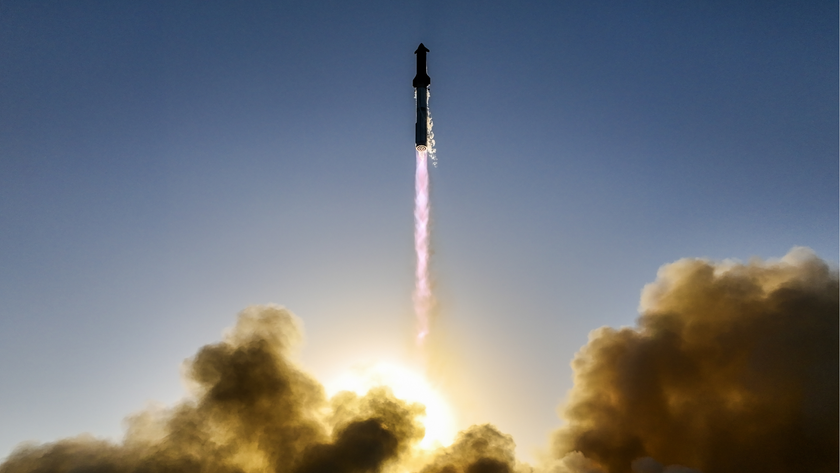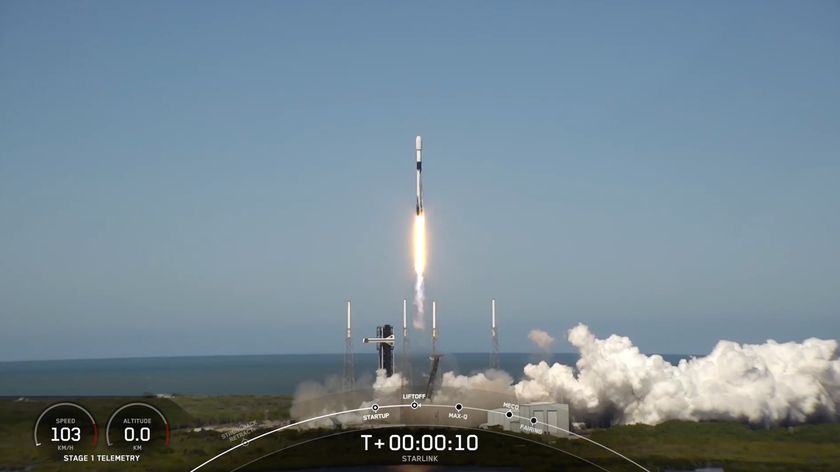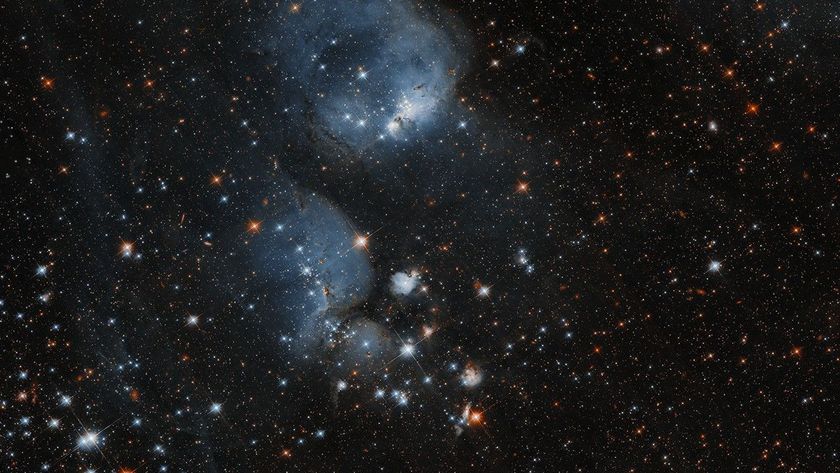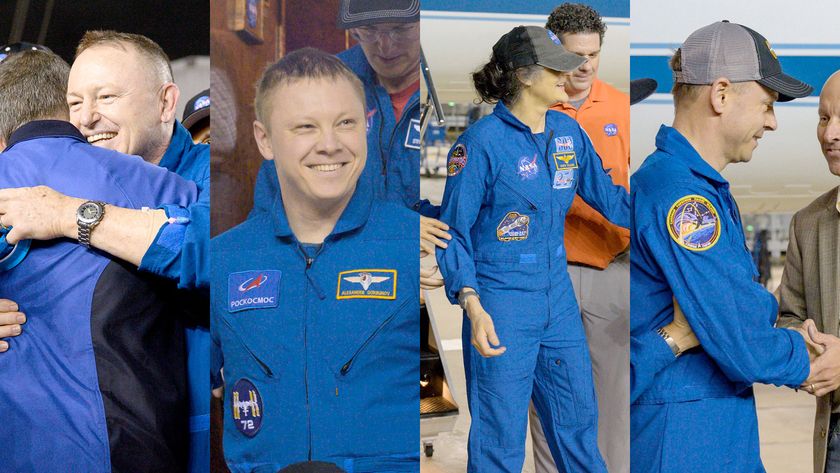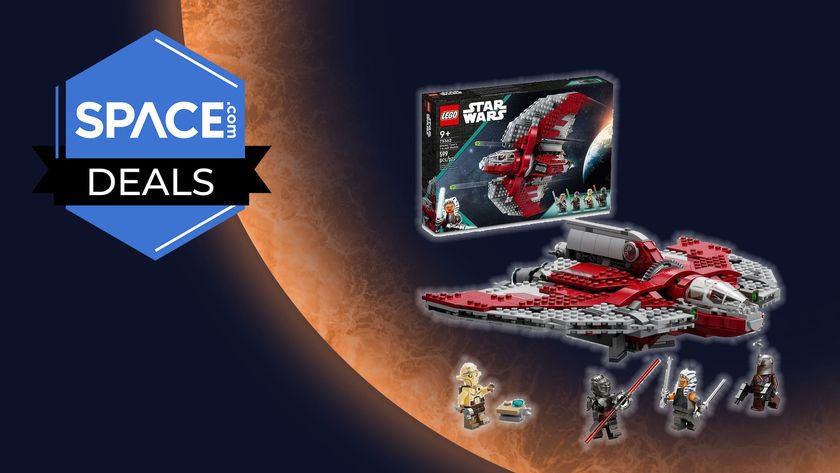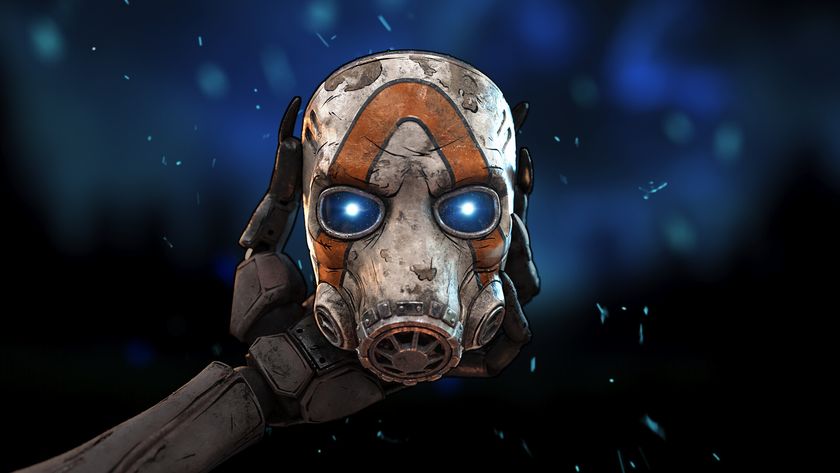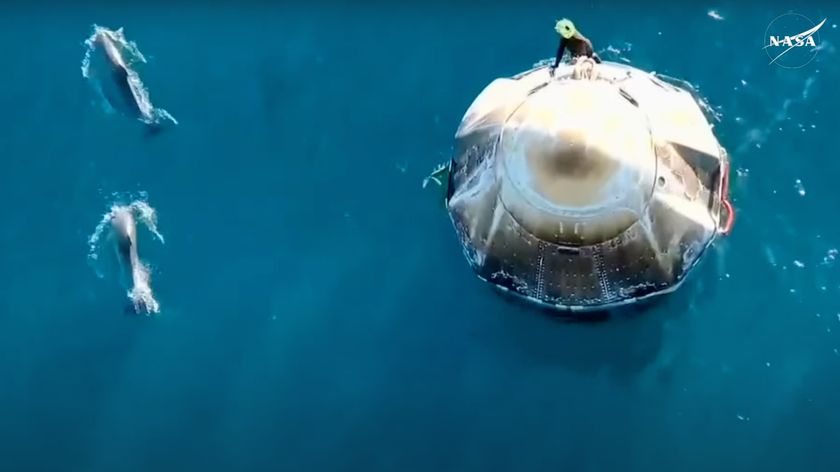What It's Like to Wear a Spacesuit in Brooklyn
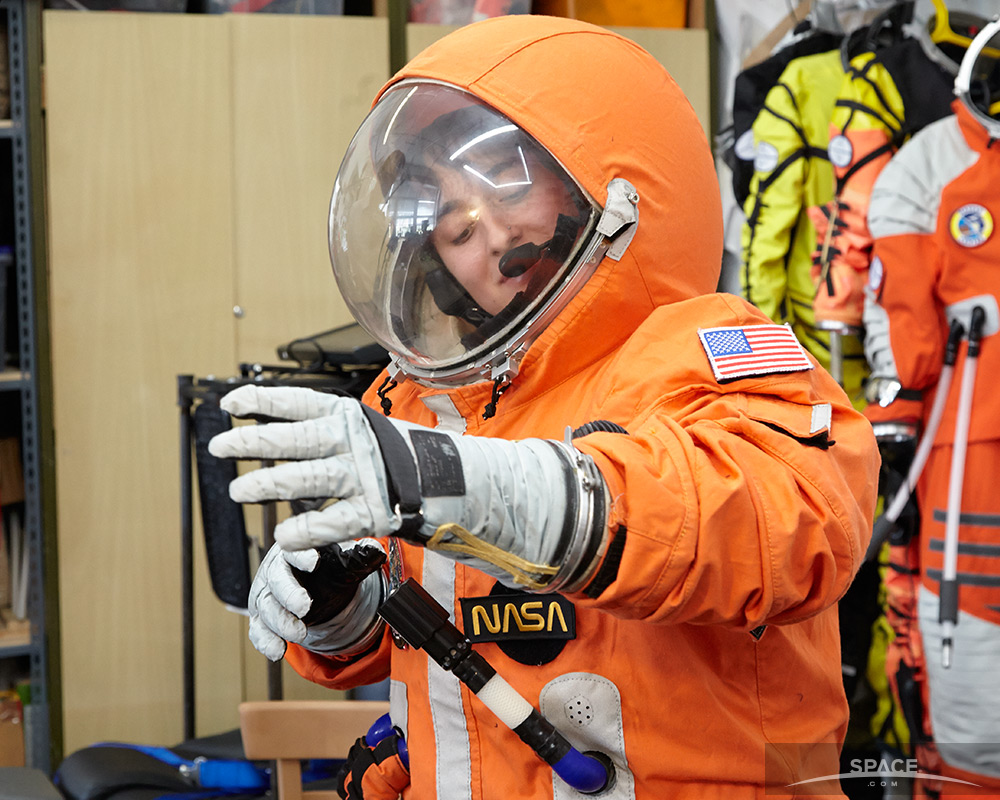
I'm sweating. I can't easily move any part of my body, and although there are people all around me, I can't communicate without activating a radio. It's pretty uncomfortable.
But I'm also having the time of my life.
I'm bouncing around in a spacesuit at Final Frontier Design in Brooklyn. I took part in the company's $395 "Space Suit Experience" to see what it was like to be in my own little pressurized world while still on Earth. [See images of Final Frontier Design's Space Suit Experience]
"I recognize that it's not the cost of a movie ticket, so some people might not want to spend $400 to try on a spacesuit, but I think there are quite a few people out there who are fascinated and kind of obsessed with spaceflight," Final Frontier Design president Ted Southern told Space.com during the experience in August. "I'd like to think of this as an opening up of space tourism to just [about] anybody who's interested in that."
Final Frontier's spacesuit adventure starts when you first enter the company's headquarters in the Brooklyn Navy Yard. Nikolay Moiseev, an engineer who has worked in human spaceflight for 21 years, gave me a short presentation about the history of spacesuits before I started suiting up for my hands-on experience.
The company's spacesuit is designed to be worn while a person is inside a vehicle. Some suits — like the suits NASA's Apollo astronauts wore on the moon — are built to be worn outside in the vacuum of space or on a specific planetary body. For example, the spacesuits used on the International Space Station during spacewalks are "EVA" (extra-vehicular activity) spacesuits, built to keep astronauts safe in the vacuum of space.
Spacesuits in general are necessary to protect the body from the extremely harsh space environment. Humans can't survive in a vacuum for very long.
Get the Space.com Newsletter
Breaking space news, the latest updates on rocket launches, skywatching events and more!
After the presentation, it was time to suit up.
Both Moiseev and Southern were on hand to help me don the spacesuit. It took both of them to help me get my legs in the right place and lift the helmet over my head. Once I was inside, they started pumping air into the suit. My ears popped as I slowly opened the valve allowing the suit's pressure to increase little by little.
Then it was time to bounce. I moved around the room, tried to touch my toes, lifted up my arms and unsuccessfully moved my hands to where I thought my nose should be on my helmet. It was a strange experience. At one point, the radio I was using to communicate with the rest of the room cut out, and I felt totally alone inside my pressurized world.
As the suit took on more pressure, it became more and more difficult for me to flex my hands. In fact, it was nearly impossible for me to fly the flight simulator because of pressure. I didn't even reach the amount of pressurization that astronauts need to withstand to fly to space, and yet, I still had difficulty moving. [Spacesuit Suite: Evolution of Cosmic Clothes (Infographic)]
After spacewalks, astronauts sometimes talk about how difficult it is to maneuver in a suit in space. The moving parts of spacesuits need to be sturdy and protected from breaking down, so sometimes the engineering of the suit makes it even more difficult for spaceflyers to move around comfortably.
Performing small actions, like removing bolts outside of the space station, can be very difficult in a suit, and now I understand why. My hands were a bit small for Final Frontier's gloves, so I got a sense of how difficult it is to maneuver in a pressurized garment like that.
People taking part in the Space Suit Experience also get the chance to swing a golf club, fly a flight simulator and take a picture looking heroic inside the spacesuit.
Southern and Moiseev met while competing against each other in a NASA challenge aimed at creating a better spacesuit glove. They teamed up to participate in another NASA glove challenge in 2009, winning second place with a prize of $100,000. The spaceflight pair went into business as Final Frontier Design after that.
The company's current spacesuit is the third iteration of the spaceflight garment for Final Frontier. The spacesuit firm has teamed up with private astronaut training company Waypoint 2 Space to help provide spacesuits for Waypoint's training program.
"Waypoint to Space embodies a forward-looking, ambitious, 21st century space-training doctrine, one which embraces high-technology solutions and maintains cost-effective infrastructure, while most importantly, opening outer space to the public," Southern said in a statement. "We are excited to participate in the future with them."
If you want to take part in Final Frontier's Space Suit Experience, find out more here: http://www.finalfrontierdesign.com/sse/ At the moment, the experience is limited to U.S. citizens and permanent residents.
Follow Miriam Kramer @mirikramer. Follow us @Spacedotcom, Facebook and Google+. Original article on Space.com.
Join our Space Forums to keep talking space on the latest missions, night sky and more! And if you have a news tip, correction or comment, let us know at: community@space.com.

Miriam Kramer joined Space.com as a Staff Writer in December 2012. Since then, she has floated in weightlessness on a zero-gravity flight, felt the pull of 4-Gs in a trainer aircraft and watched rockets soar into space from Florida and Virginia. She also served as Space.com's lead space entertainment reporter, and enjoys all aspects of space news, astronomy and commercial spaceflight. Miriam has also presented space stories during live interviews with Fox News and other TV and radio outlets. She originally hails from Knoxville, Tennessee where she and her family would take trips to dark spots on the outskirts of town to watch meteor showers every year. She loves to travel and one day hopes to see the northern lights in person. Miriam is currently a space reporter with Axios, writing the Axios Space newsletter. You can follow Miriam on Twitter.
